|
Hello and Salaam, Aisha! I am so excited to be interviewing you today for KidLit in Color's blog. I'm sure many are familiar with you and your work, but can you briefly tell our readers a little about yourself and your books: Walaikumsalaam, Aya! I’m delighted to connect with you. I write books for young people of all ages including Amal Unbound, and Bilal Cooks Daal. I’m also a proud founding member of the nonprofit We Need Diverse Books. I absolutely loved your picture book Bilal Cooks Daal (fun fact, I used it as a comp for my picture book, The Night Before Eid). The Together Tree is definitely a bit more different and more serious. I know you touch on it a little in your backmatter, but can you tell readers why you wrote it? I’m delighted to hear that Bilal Cooks Daal was a comp for The Night Before Eid! My picture books are inspired by my children and our lived experiences. Bilal Cooks Daal was inspired by my middle son who was surprised when no one in his preschool knew what daal was. The Together Tree is also a story inspired by one of my children though his situation was considerably more challenging. During his first week of kindergarten, my eldest son was bullied by his peers. The Together Tree explores what it is to experience bullying, and importantly, what someone can do if they happen to be a bystander to help the person who needs such help. In addition to being a story about the power of bystanders, The Together Tree is also a tale about the power of imagination to build community.
The Together Tree also reminded me of my debut picture book, The Arabic Quilt, in terms of getting bullied for the way they look or speak. In both books, the "mean kid" feels bad for what they did and is apologetic. I've heard some conflicting points of view about this. Why did you think it was important that the mean kid apologize to Rumi for his actions in The Together Tree? That’s a great question! I think that both situations (where a bully does not apologize or learn, and where a bully does mend their ways) are realistic and happen every single day. I love Jacqueline Woodson’s picture book Each Kindness which examines how sometimes we don’t get to make amends with those we’ve hurt. Stories like those are very important. I chose to write a story about reconciliation in part because the children in The Together Tree are very young and because while it is a story about many things, it’s also a story about the power of forgiveness. We might make mistakes. We might do the wrong thing. But we always have the choice to rectify, and get back on track. Do you have any tips for aspiring authors or new authors? I often get asked where I get my story ideas from. As I shared in one of my earlier answers, much of what I write is inspired by my own lived experiences. So often we discount our own lives as sources for stories, but there is so much that can be examined and explored. One should never discount the power of ones own lived stories! What did you think of the illustrations, do you have a favorite spread? LeUyen Pham is one of my absolute favorite illustrators. When we began to consider who might illustrate this book, she was my dream partner for this project. I am so grateful for her insights and creativity that brough the story to life. My favorite spread is further into the story, when Asher—the bully—does an unthinkable act of cruelty. LeUyen captures the emotion of that moment for both the bully and Rumi, the child who is being bullied, so vividly through her use of color and lack thereof. It is a profound spread. What's the biggest takeaway you want for readers to have after they finish reading this book? It is my dream that this story can be part of first week of school activities in order to build community and foster a warm learning environment. I’m delighted to hear that Bilal Cooks Daal was a comp for The Night Before Eid! My picture books are inspired by my children and our lived experiences. Bilal Cooks Daal was inspired by my middle son who was surprised when no one in his preschool knew what daal was. The Together Tree is also a story inspired by one of my children though his situation was considerably more challenging. During his first week of kindergarten, my eldest son was bullied by his peers. The Together Tree explores what it is to experience bullying, and importantly, what someone can do if they happen to be a bystander to help the person who needs such help. In addition to being a story about the power of bystanders, The Together Tree is also a tale about the power of imagination to build community. The Together Tree also reminded me of my debut picture book, The Arabic Quilt, in terms of getting bullied for the way they look or speak. In both books, the "mean kid" feels bad for what they did and is apologetic. I've heard some conflicting points of view about this. Why did you think it was important that the mean kid apologize to Rumi for his actions in The Together Tree? That’s a great question! I think that both situations (where a bully does not apologize or learn, and where a bully does mend their ways) are realistic and happen every single day. I love Jacqueline Woodson’s picture book Each Kindness which examines how sometimes we don’t get to make amends with those we’ve hurt. Stories like those are very important. I chose to write a story about reconciliation in part because the children in The Together Tree are very young and because while it is a story about many things, it’s also a story about the power of forgiveness. We might make mistakes. We might do the wrong thing. But we always have the choice to rectify, and get back on track. Do you have any tips for aspiring authors or new authors? I often get asked where I get my story ideas from. As I shared in one of my earlier answers, much of what I write is inspired by my own lived experiences. So often we discount our own lives as sources for stories, but there is so much that can be examined and explored. One should never discount the power of ones own lived stories! What did you think of the illustrations, do you have a favorite spread? LeUyen Pham is one of my absolute favorite illustrators. When we began to consider who might illustrate this book, she was my dream partner for this project. I am so grateful for her insights and creativity that brough the story to life. My favorite spread is further into the story, when Asher—the bully—does an unthinkable act of cruelty. LeUyen captures the emotion of that moment for both the bully and Rumi, the child who is being bullied, so vividly through her use of color and lack thereof. It is a profound spread. What's the biggest takeaway you want for readers to have after they finish reading this book? It is my dream that this story can be part of first week of school activities in order to build community and foster a warm learning environment. Aisha Saeed is the author of Written in the Stars, which was listed as a Best Book of 2015 by Bank Street Books, a 2016 YALSA Quick Pick for Reluctant Readers, and named one of the Top Ten Books All Young Georgians Should Read in 2016. She is also the author of the middle grade novel Amal Unbound, which has received starred reviews from Publishers Weekly and Kirkus Reviews and is a Global Read Aloud for 2018. Her other picture books include Bilal Cooks Daal and The Together Tree. Aisha is a founding member of the nonprofit We Need Diverse Books. She has been featured on MTV, HuffPost, NBC, and the BBC, and her writings have appeared in publications including the journal ALAN and the Orlando Sentinel. Today on the blog Alliah L. Agostini is thrilled to have the opportunity to chat with KidLit in Color member Alyssa Reynoso Morris, debut author of Platanos are Love (and as you will learn, much, much, more!). ALA: Alyssa, you have a very busy 2023, but I’m very excited about your debut, Plátanos are Love. Can you tell us a little about your inspiration for the book? How much of this story is taken from your own experience? ARM: Plátanos are Love was based on my childhood experience cooking in the kitchen with all three of my grandmothers. Cooking was how they showed me they loved me. It was also a time for us to talk about school and life. We would cut and fry and dice and mash while sharing stories and making plans for the future. My abuelas have since passed but Plátanos are Love is my way of keeping them, their memories, and their love alive. ALA: I love how you managed to weave in the multi-generational and historical importance of platanos to Dominican culture - why was this important to you as you molded the narrative? ARM: I have always been interested in how our history impacts our present, which is an interest imbued in me by my abuela Nona (one of the abuelas that influenced this book.) My interest in history makes its way into all my stories, but it really is the HOOK of this book. I wanted to show that plátanos - a food many Dominicans eat everyday - is not just a food we love, it is one we are able to enjoy because of the resilience of our African ancestors. ALA: Your book is dedicated to your three abuelas for teaching you the magic of storytelling and food. What wonderful lessons. Did/do they have any signature dishes that bring you particular joy? Which ones can be found in Plátanos are Love? ARM: I LOVE THIS QUESTION! They each had their signature dishes and all could be found in Plátanos are Love. If anything it was HARD to pick only a few of their dishes because they could all cook up a storm and because plantains are such a versatile food. Some signature dishes I was not able to include in the text are mofongo, alcapurria, pastelon, yaroa, and many more. ALA: I love books like this one that use onomatopoeia beautifully. What’s your favorite sound word? ARM: I love onomatopoeia and alliteration. These are some of my favorite literary techniques. My favorite sounds in the English version of the book is “CRUNCH MUNCH” but my favorite sound word in Spanish is “MACHUCA” which means “to mash.” It is just so much fun to say. I had so much fun translating my book into Spanish. The Spanish version Los Platanos Son Amor will come out in 2024. ALA: Are there any Easter eggs readers should look out for as they read the book? ARM: OHH YES!!! Great question! The amazingly talented Mariyah Rahman included real pictures of both our families in the illustrations. ALA: What is your favorite way to eat plátanos? This is a big point of debate in our family. ARM: Asking me to pick my favorite way to eat plátanos, is like asking me to pick my favorite book… Ahhh. I can’t! I am sorry to disappoint you, because it depends on my mood. When I want salty and crispy I eat tostones. If I have time and want something more filling then I make mofongo or mangu. If I want something sweet, I eat maduro. If I want plátanos but don’t want them to be the star of the dish I will eat it in pastelon, which is basically like lasagna, but instead of noodles we use plantains cut into thin slices. ALA: You provide three delicious recipes in the back of the book. Are you a big chef? If so, what’s your favorite thing to cook? ARM: I am NOT a chef, but I can cook. On a scale of 1-10, 1 being an amateur and 10 being pro-chef; I am a solid 7. I love making meals that remind me of my abuelas. I feel like they are hugging me as I cook. I love making dishes from my culture and sharing them with others. I also enjoy trying out new recipes from other cultures because I love to learn and believe in celebrating our cultural diversity. ALA: What do you want readers to take from Plátanos are Love? ARM: I want them to know that they are loved. I want them to have pride in their roots, culture, and recipes. I want them to know about the resilience of their ancestors. I want them to know that they matter and that their stories and experiences matter. ALA: You have two more books coming out right? Would you mind telling us a little bit about them? ARM: Yes of course! On October 24th, 2023 my second book The Bronx Is My Home comes out, and my third book Gloriana Presente: A First Day of School Book comes out in 2024. The Bronx Is My Home is a picture book celebration of hometown pride including the history, landscape, cuisines, cultures, and activities unique to this vibrant community. Welcome to the Bronx, New York, where you can see bodegas and businesses bustling on every street, taste the most delicious empanadas in the world, smell the salty sea air of Pelham Bay, and pet horses at the Bronx Equestrian Center. From sunrise to sunset, Santiago and Mami have many treasures to enjoy in their neighborhood on a beautiful Saturday, including colorful birds on the Siwanoy Trail and fresh cannolis on Arthur Avenue. This energetic and joyful family story offers both a journey through and a love letter to this special borough. The Bronx Is My Home is a triumphant celebration of hometown pride, as well as a heartfelt invitation to all, for readers of My Papi Has a Motorcycle by Isabel Quintero, illustrated by Zeke Pena, and Saturday by Oge Mora. My third book Gloriana Presente: A First Day Of School Book is a bilingual picture book that features a Dominican American girl overcoming anxiety and finding her voice in the classroom. ALA: While many picture book authors are fairly prolific, there tends to be a common thread throughout most of our work - what would you say is consistent throughout yours? ARM: I love this question. All my books are very different. Plátanos are Love is lyrical and poetic. The Bronx Is My Home gives off non-fiction sightseeing vibes. Gloriana Presente: A First Day of School Book is character and plot driven with a struggle the main character has to overcome. The themes that can be found in my books are family, pride, resilience, and joy, but if I were to sum up what strings all of my books together in one word it would have to be LOVE. Plátanos are Love is a LOVE letter to plátanos, my culture, my family, and my ancestors. The Bronx Is My Home is a LOVE letter to The Bronx and a reminder to kids from the BX that they can be whatever they want to be. Gloriana Presente: A First Day of School Book is a LOVE letter to my Abuela, to immigrants, and to those who struggle to find their voice. I want my audience to feel loved by my books so they go out into the world and spread it far and wide. We can all use more love in the world. ALA: Where can readers find you, and most importantly, how can they best support your work?
ARM: Please find me on my website which is www.alyssaauthor.com as well as on Instagram and Twitter at @AReynosMorris. The best way to support my work and authors is by ordering our books and/or requesting our book at your local library. After you read our stories, please review them. It helps to boost and share our stories. I also do author visits and am open to media appearances so hit me up. Growing up celebrating Eid as an Arab American in the 1990s vs. today Aya Khalil 1996. Third grade. Minot, North Dakota. December. It was Christmas season and everyone was buzzing about what gifts they asked Santa for. Christmas books were read. The classroom was decorated with dazzling lights. My friends told me Santa is real and one of my friends even swore she saw him in the sky. I was the only Muslim in the class. In fact me and my brother were the only Muslims in the entire school in the small town. Ramadan wasn’t until January and Eid was a month after that. But it was fine because we were excited for the three weeks of winter break and all the yummy treats our friends and neighbors would share. 1999. Lima, Ohio. 6th grade. December. It was Ramadan too! My brother and I and one other girl were the only Muslims. We fasted and our classmates wondered why we weren’t eating while they wondered what they were getting for Christmas this year. A Sega Dreamcast? A nanopet? We were looking forward to the three weeks off, most of it during Ramadan and wait until Eid where our parents would take us to a small rented building the twenty Muslims in town went to pray Juma’a and held Eid prayer. We would receive our Eidiya, our Eid money, eat my mom’s delicious ka’ak el Eid, flaky buttery cookies topped with powdered sugar. We would share them with our lovely Indian neighbors and they would exchange their delicious gulab jamun with us throughout the year. 2001. Ohio and Cairo. Ninth grade. Phew. We were now in an Islamic School and everyone at school celebrated Eid and Ramadan. Late night taraweeh at the masjid with my schoolmates, halaqas at my house and my friends’ house on Friday nights. We would host fabulous Eid brunches at our house.This year would be extra cool because we would spend Eid and the last few days of Ramadan in Egypt since was during winter break and it was magical. We stayed up until morning Eid prayer with my cousins. Streets were adorned with Ramadan and Eid decoration. Lots of lights! And so many lanterns, fawanees, everywhere. 2012. Charleston, South Carolina. December. My first was born. Eid wasn’t until August so we had plenty of time to prepare for her first Eid. Eid came in August, and we dressed her up in the cutest Eid dress. We went back home to Ohio for Eid to celebrate with the family. We all dressed in our best, and put up Eid lights at home. We even got my daughter a onesie that said My First Eid. I never had that when I was young. There was even an Eid book out, published in 2007. Not bad! I’m sure there will be more as my daughter gets older. 2015. Ohio. June. My second was born. And Eid was next month! My first born daughter was 2.5 and was going to preschool. We made goody bags for her classmates and I was asked to come talk about Ramadan and Eid and read an Eid book! I found one or two Eid books. Not bad. But they were either a bit difficult to find at the library and local book store or written by…people who weren’t Muslim? It’s okay, I’m sure there will be more as my kids get older. 2015-2019. Ohio. My third was born in 2019. We went all out on Eid for the kids. We put lights inside the house (and outside!), decorated the house with lanterns, baked, decorated cookies, shared with our friends and neighbors. As my kids entered grade school, I was asked to come in talk about Eid/Ramadan and even read some books. A few books about Ramadan were being published, but there were still barely any Eid books. It’s OK though because there were lots of other fun Eid and Ramadan things we didn’t have when we were young: personalized pajamas, modern yet traditional Eid decor, LED lights, Eid cards. My friends and I even collaborated with the local library and planned Ramadan and Eid events. It was the best. My kids were excited for Eid.
2023. The Night Before Eid was sold a few weeks after. It was released just last month. It’s been mentioned in The Washington Post, USA Today, Associated Press and more. Target stores nationwide bought a few thousand copies for their store and I will never forget the first time I went in the store and found it there. Finally, our stories are being recognized. Finally, our Arab traditions are celebrated. Finally, our food and language are normalized. I needed this book growing up as an Arab Muslim in America, and I hope kids will embrace this story filled with intergenerational love, baking, and the magic of Eid. Although there are a few Eid books out there or coming out, there’s still work to be done. From a 2019 research, only 1.2 percent of books, 45 books, had some type of Muslim diversity. There’s a lot of work to do, and we are still underrepresented in children’s literature, but the talent amongst Arabs in America is incredible. We just need more publishers and editors to welcome us and believe in our stories. This blog post is part of the #30DaysArabVoices Blog Series, a month-long movement to feature Arab voices as writers and scholars. Please CLICK HERE to read yesterday’s blog post by Sahar Mustafah (and be sure to check out the link at the end of each post to catch up on the rest of the blog series). You can find out more about Aya's books here. Photo credit for head shot: Feda Eid We are so excited to share this interview today with Hannah Moushabeck. Our member Aya Khalil interviews her about her newest book, Homeland: My Father Dreams of Palestine. AK: Hi Hannah! I am so excited to be interviewing for Kidlit in Color's blog. Could you please briefly tell the readers about yourself? HM: My name is Hannah Moushabeck. I am an author, editor, and book marketer. I was raised in a family of publishers and booksellers in Western Massachusetts and England. Born into Interlink Publishing, a family-run independent publishing house, I learned the power of literature at a young age. My first book Homeland: My Father Dreams of Palestine (Chronicle Books, March 2023) goes on sale on March 28th, 2023. AK: Your debut picture book, Homeland: My Father Dreams of Palestine is an absolutely stunning picture book that is filled with so many layers like intergenerational relationships, family, delicious food, hope and freedom. Why did you write this picture book with these important topics? HM: The displacement of families is tragically not an uncommon practice in our global history. People from around the world are being displaced from their homelands through war, climate disasters and unrest, unable to return, with devastating results. While this book is a love letter to my homeland, I hope it sparks curiosity and will inspire readers to learn more about displaced populations. I also hope that the book will give Palestinian readers a feeling of pride in their culture and homeland, as I do, offering them an alternative to the negative stereotypes portrayed in popular media. AK: The author's note was very moving. You mentioned the 1948 Al-Nakba, or the catastrophe. Would you be willing to tell the readers what this is and why it is important to write about it in the author's note? HM: For generations my family lived in the Katamon neighborhood in West Jerusalem, until May 15, 1948, the day Palestinians call Al-Nakba (the catastrophe). Al-Nakba refers to the displacement and ethnic cleansing of Indigenous Palestinians from their ancestral homeland. May 15th, 1948 was the day the State of Israel came into being and began the forced expulsion of hundreds of thousands of Palestinians. The Nakba, however, never ended, as Palestinians continue to be forced to leave as their homes are destroyed and their freedoms are limited. On this day all my relatives, after being warned of danger, packed small bags, locked their doors, took sanctuary in the Old City of Jerusalem. They were never allowed to return to their homes and, to this day, carry with them the keys to their houses, now occupied by others. There is so much misinformation about Palestine. I wanted to provide a first-person account of my family’s lived-experience as a testimony to our existence and the existence of all Palestinians living in the diaspora. AK: Thank you for sharing your family's experiences. The illustrations are absolutely stunning. I especially loved the food and kitchen illustrations! What did you think of Reem's illustrations and what was your favorite spread and why? HM: I am deeply in love with Reem’s illustrations! We worked so closely, and she was able to capture so many incredible things from the photos and stories that were shared with her. The muted tones and soft lines take the reader back in time whilst giving the story an ethereal, fairytale-like quality. My favorite spread has to be the illustration of the girls dreaming of their homeland. The artwork brings tears to my eyes, as we see the girls interacting with characters from their fathers’ stories. It offers the reader a glimpse of what life would be like, had my family never been displaced. It shows that even if you cannot return to somewhere in reality, it still lives on in stories and your imagination. Photo credit: Shanaz Dean
AK: Tell us a little about your author journey. Something authors of color and I talk about, and especially my Arab author friends, are the challenges we face to get our work published. How was your journey like? How long did it take for you to find a home for your beautiful words? HM: My author journey is not a typical one. Having worked in the publishing industry for many years, I have built close friendships with editors, agents, and other authors. When the manuscript of my book was finished, I sent it to my friend, Ariel Richardson (a talented editor at Chronicle Books) for advice. She called the next day and told me she wanted to acquire it. My picture book will one of only a handful of traditionally published picture books about Palestine (written by a Palestinian) since Sitti’s Secrets by Naomi Shihab Nye was published in 1994. There are many challenges for Arab authors. According to the Diversity Baseline Survey by Lee & Low, less than one percent of all books published in the US are by folks of Middle Eastern decent while the population of Middle Eastern immigrants living in the United States is four times that number! Like for many other marginalized populations that path to publishing is much steeper. Nora Lester Murad, author of Ida in the Middle, noted in a recent article for School Library Journal that “What I’m finding in my research about censorship of Palestinians is concerning. Although advocates of intellectual freedom, freedom to teach and the right to learn stand up (appropriately so!) for books about Black, brown and queer communities, the intense, multilayered censorship of Palestinians goes virtually unchallenged – and, in fact, unnoticed. Simply put, Palestinians and their literature are invisible to organizations like the American Library Association, National Coalition Against Censorship, and the National Council of Teachers of English, among others.” Last year, in an effort to offer my publishing knowledge and support to Palestinian writers, I started Palestinians in Kidslit, a group of Palestinian Americans and Canadians who write for children. I am so excited to share that many members have book deals at major publishers coming out in the next few years. AK: Wow, I love that the editor called you right away to acquire it! I absolutely love all the details and symbolism throughout, like the musical instruments, the the tarboosh, the keffiyah, Umm Koulthoum (I have her in my picture book too!), the key and the pigeons. Why as it important to have these throughout and what does it mean to you and Palestinian readers? Is there anything you would like to elaborate on more for readers who may not be familiar? HM: When writing this book, I had two goals in mind. The first was for Palestinian readers to feel seen and proud. Proud of our history, our culture, and our art. Including details that Palestinians would recognize was an important part of this representation. The second goal was for this book to serve as a window into Palestinian culture for non-Arabs. True authentic representation is in the details! One example of this is the symbol of the key. Palestinians living in exile have used the key as a symbol for the “right to return,” which is a movement that would allow Indigenous Palestinians the freedom to return to their homeland. Many Palestinians still have the keys to their houses, like my family. Keys also represent an opening or unlocking, which feels particularly relevant to my story. As a second-generation Palestinian, I find myself constantly seeking out and learning more and more about my culture and ancestry. One of the tragedies of displaced families is that so much of what makes up your culture and identity is lost through distance, time, and assimilation. This book unlocks truths about my culture that took me many years to discover. It took years of pestering my family members for stories, recipes, and photos. I am still unlocking new wonderful parts of my culture—even now as an adult. AK: That's so beautiful. I know readers will love it and Palestinians will be so proud of their culture and history. Where can readers find you and purchase/pre-order your picture book? At their local independent bookstore of course! If folks would like signed copies, they can order them at these bookstores. Photo credit for photo below: Shanaz Dean Today, on KidLit in Color we are celebrating award-winning author Alliah Agostini Livingstone and illustrator Shamar Knight-Justice on their picture book, BIG TUNE: Rise of the Dancehall Prince (Published by Farrar, Straus, and Giroux - BYR). BIG TUNE is an exuberant picture book about a Black boy with big dancing dreams who learns the meaning of courage and community. BIG TUNE is set within a vibrant Caribbean American neighborhood and told to a rhythmic beat, Big Tune is a story of Black boy joy that touches on determination, confidence to express who you are, selflessness, and community gratitude. Alyssa Reynoso-Morris talks with Alliah about her latest book on the blog. ARM - First, thank you so much for writing this fun text Alliah. As someone who loves to sing and dance, I loved your book!! Tell me, what inspired you to write this book? ALA - My mutual love of music and dance and community- something I was missing when it was written! This book, like many being released right now, was born during the height of the pandemic. We were largely isolated and celebrations were limited to drive-by celebrations and in-home dance parties with DJ Alexa. ARM - Your love of music, dance and community definitely shine through. Some of the themes I picked up on are “community”, “generosity”, and “sharing” I love how you interwove such important themes into such a fun and heartfelt text. Can you talk about your writing process for this story? Did the idea come to you all at once with the themes and character or did it change and evolve through revisions? ALA - Big Tune sprung out of another manuscript I was working on that wasn’t quite working. I was sharing it with critique partners when one asked a question - what if the protagonist was shy? The other story was about dance, and it triggered some memories of stories my husband would tell about the family parties his parents threw when he was growing up in a Jamaican household in Brooklyn. While he loved the parties, everyone else would dance and some would sing along, but he was on the shy side! But he did like picking up the cans and bottles so he could keep the coin return money and spend it on whatever he wanted. Ironically, he is the best dancer I know - something a lot of his family members didn’t see until our wedding (the DJ was lit!). Once this connection hit, the rest of the story came to me like a flood. I wound up spending time finessing the rhyme, and it ultimately wound up being the manuscript that helped me secure an agent. After that, I worked with my agent to tighten the rhythm and rhyme even more, so it would read cleanly when on submission. Fortunately, Janine O’Malley at FSG liked it enough to pre-empt it with a two-book deal. Aside from the addition of one spread and the author’s note, the book reads mostly as it did when it was submitted. ARM - WOW THAT IS AMAZING! I love Shane’s character. I resonate with him so much as the shy one in the family. How did you develop such a relatable character? ALA - I’m fortunate to live with a few inspirational folks- this was helpful while writing during lockdown! Like many writers, I used some of the best (and sometimes challenging!) attributes I see in the people I love to make characters that are a fusion of reality and fiction. I didn’t know my husband as a child, but knowing who he is now, I know that being generous, determined, enterprising, and family and community-minded are likely attributes that he had back then - so I thought about how those may manifest in a youthful, but imagined version of him. ARM - Your debut book The Juneteenth Story: Celebrating the End of Slavery in the United States is informative and historical. When I read the BIG TUNE advanced readers copy, I literally felt like I had to pick my jaw up off the floor. The rhythm and rhyme make for a lyrical and poetic story. It is so different from your first book. And your third book is a biography, right? How do you manage to write in such different styles? ALA - Big Tune was originally supposed to be my first book! When the opportunity to write The Juneteenth Story emerged, I hadn’t yet written any non-fiction, but I knew it was something I had to do, as my grandfather helped start my hometown’s Juneteenth celebration over 46 years ago! Frankly, I’m at the point in life where I’m less afraid to try new things, so I did my best and it worked out well. When the biography opportunity came along, I already had non-fiction under my belt and was working on another, so it has been helpful to build my skill set as I’ve worked on new projects. I have an absurdly long spreadsheet of other works in progress - I find inspiration everywhere and kind of just go with whatever my gut tells me for a particular story. That typically is accompanied by endless revision, however. ARM - Yes revision is key. Can you offer any tips for those that want to write in rhyme? ALA - Think long and hard about your need to write in rhyme. When it’s executed well, it reads fun and effortlessly, but getting to this point is hard work. You’re trying to make sure you tell a cohesive story while also doing so within the limitations of maintaining a rhythm and rhyme scheme. My agent first put it in these terms for me- A rhyming manuscript is like giving someone a song to sing… without sheet music. Writing in rhyme also puts some limitations on the global marketability of your book because of the difficulty of translating it. A lot of editors aren’t into rhyming manuscripts, but obviously, some are. All that being said, as much as I try, I can’t resist the urge to rhyme or write rhythmically - it’s just my natural inclination. It made sense for Big Tune, especially, as music is at the heart of the story! I like to start with a concept and a hook. Sometimes I write rhythmically sans rhyme (I love to wisely use and evolve repetition). But as the story builds, sometimes it flows as more of a lyrical piece, and other times, rhyming. Use a metronome to keep the beat while you read your work aloud. Google has a free one. If you feel yourself having to speed up or slow down to match the beat, then the rhythm needs to be reworked. I like to use the AI read-aloud function on MS Word to read my rhyming or rhythmic work back to me. AI voices are the driest possible voices, and they don’t “lie”, or modify rhythm to make it sound better. If a robot reads your writing and sounds like it has some flow, you’ve got something good. ARM - Not only are you an award-winning author, but you’re also a wife and mom. How do you make time to write? ALA - I’m not an early morning person, but I try to be diligent about writing in the morning after I take the kids to school and use the afternoon for social media/admin/meetings. Doesn’t always work that way, but it’s nice when it does. I’m also a night owl, and I typically get struck with an idea at 11:30 pm as I’m trying to go to sleep (exactly what happened with Big Tune!)… then I’m up until about 1 am. ARM - I am a night-owl too and I often do my best work at night. I know your debut book The Juneteenth Story: Celebrating the End of Slavery in the United States was sold out. Congratulations on that. How has your marketing background helped you promote your books? ALA - Thanks, although honestly that problem can also be a double-edged sword, or a “good-bad problem” exacerbated by pandemic supply chain issues. I had book signings with a very limited number of books to sign! Fortunately, it did perform beyond expectations, and my publisher also wisely pivoted to create a paperback option in the absence of hardcover availability. I’ve worked for huge multi-million dollar brands, and tiny tiny start-ups - frankly, my startup experience is what has been most helpful so far. I’ve learned how to market creatively (hustle) with basically no budget. Although budgets are very, very helpful! ARM - What are the top 3 marketing tips you want to share with authors and readers? ALA - Think hard about your book’s possible ‘Who’, or target - who will be the biggest champion for your book, and how can you reach them in a meaningful way? While stories can connect to people on a number of different levels, for books that may resonate with historically marginalized audiences, you may better understand them than your publisher does. Your publisher will likely have a better understanding of the levers for traditional literary publicity channels, but don’t be afraid to provide your insight on less traditional ways to reach your audience. Talk to everybody about your book- fight through the urge to be shy or not self-promote. You never know who may find interest in your work or may know someone who could be helpful for pitching your book to press, securing a speaking engagement, or even a bulk order of your books. Be authentic. If you are open to it, share your journey - the peaks and valleys. When people feel invested in your journey, your success feels like their success, so they are emotionally invested in helping you succeed! When you are genuine about your passion for your topic you’re the most magnetic. Do it in your own way. I love writing rhythmically, and I also love music, so I share a lot of playlists to help people connect with my topic and work musically, for instance. ARM - What books are on your to-be-read list? ALA - Where to begin?? There is a certain upcoming book about one of my favorite foods- plantain!… Platanos are Love by a certain author named Alyssa Reynoso-Morris (wink). I’m also looking forward to reading Locs not Dreads by Tonya Abari, and Grounded, an upcoming middle grade book by a coalition of incredible authors including Jamilah Thompkins-Bigelow. ARM - SUCH A GREAT LIST!!! What do you hope readers take away from BIG TUNE: Rise of the Dancehall Prince? ALA - So much! Persevere, do what you love, and be yourself! It can be hard, but the resulting joy can truly be irreplaceable. Although people don’t always read Author’s Notes, I hope they take a minute to read this one. It talks about how in immigrant (and other!) communities, parties and gatherings are more than parties - they can also be safe spaces. Places where you don’t have to explain yourself, a place where “everybody knows the words to the songs”, and an opportunity for muted accents to be amplified. Separately, I hope people learn a little bit about the importance of Caribbean-descended artists to the emergence of hip-hop, a global phenomenon which is celebrating its 50th birthday this year! ARM - Thank you so much for your time Alliah! You are incredible and deserve all the STARS and FLOWERS. To learn more about Alliah read her bio below and visit her website. Buffalo, NY native Alliah L. Agostini has marketed everything from iconic brands to scrappy start-ups, but motherhood helped her return to her first love: children's literature. She writes to spread joy, truth, and to help more children see themselves reflected on the page.
Alliah is the author of The Juneteenth Story: Celebrating the End of Slavery in the United States, the upcoming Oprah Winfrey: A Little Golden Book Biography, and Junior Library Guild Selection BIG TUNE: Rise of the Dancehall Prince, which has received starred reviews from Kirkus and Publisher's Weekly. A proud member of KidLit in Color, Black Creators HQ, the Picture Book Sunrays, and SCBWI, she and her work have been featured on CNN, the TODAY Show, GoodHousekeeping, and more. Alliah resides in New Jersey where she enjoys impromptu dance parties, fossil hunting, and making up corny jokes with her husband and two children. She has an A.B. and an M.B.A. from Harvard. Website: https://www.alliahagostini.com/ Social media tags Instagram: @alliago Twitter: @alliago 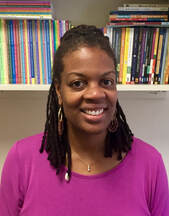 KidLit in Color author Valerie Bolling is excited to reveal the cover for TOGETHER WE SWIM (illustrated by Kaylani Juanita and published by Chronicle). This picture book, which is a companion for 2022’s TOGETHER WE RIDE will be released on August 15, 2023. What does the cover say? VB: First of all, shout-out to Kaylani Juanita for these heart-warming illustrations! I love how she depicts the love between mother and son and the special moment they share as she’s teaching him to swim. This cover screams parental love and, of course, “Let’s swim!” Why should folks read this book? VB: This book celebrates an important achievement in a child’s life: learning how to swim. There are other books about swimming, but what makes this one special is that it highlights the bond between child and adult that’s required to succeed in learning this skill. Since a father-daughter relationship was showcased in TOGETHER WE RIDE, readers will enjoy seeing the mother and son from that book as the focus of TOGETHER WE SWIM. What’s Next? VB: On May 2, 2023 the first book, THE GRAY DAY, in my early reader series, RAINBOW DAYS (illustrated by Kai Robinson and published by Scholastic Acorn), will make its appearance, and the second book in the series, THE GOLD BOWL, arrives in September. BING, BOP, BAM: TIME TO JAM! (illustrated by Sabrena Khadija and published by Abrams Appleseed) will be released on August 8, 2023 – a week before TOGETHER WE SWIM. Looking ahead to 2024, I’ll welcome the third RAINBOW DAYS book, THE ORANGE WALL, as well as I SEE COLOR, a co-authored book with Kailei Pew (illustrated by Laylie Frazier and published by Harper Collins). I’m excited to get these books into schools, libraries, bookstores, and, ultimately, into the hands of young readers.  What does the cover say? KJ: Encouragement! A proud mama swimming with her confident son. I hope readers look at the cover and hear the ambiance of a community pool, the mother cheering him on, and the child laughing. Why should folks read this book? KJ: Valerie does an excellent job capturing the nervous excitement and rewarding enjoyment of learning new skills. Together We Ride, and Together We Swim are the perfect books to revisit and unwind after a long day of learning something new! What’s Next? KJ: I’m currently illustrating two books and working on the art for a project I wrote. I also have an upcoming release in September 2023 for another book I illustrated, Loud and Proud, written by Lesa Cline-Ransome. I’ll be around! by: Sarah Lyu Asian-American identity encompasses a wide range of experiences and holds space for multiple identities within its larger umbrella. Growing up in a family of Chinese immigrants, I largely saw myself and my story as fitting within that specific mold, but my understanding of what it meant to be of Asian descent in this country changed in college where, for the first time, I had access to classes on the history, literature, and psychology of Asian-Americans as a group. It was a process of awakening to the perspective that Asian-American was above all a political identity. That’s the approach I take to writing Asian-American characters and one I hope to see more of in fiction. The aspects of my personal history with all the texture of cultural touchstones like food and language, and the common narrative of assimilation, are still important to me, but there’s a bigger picture to the way people of East Asian, Southeast Asian, and South Asian descent are treated as a collective in this country, and that’s what I wanted to explore most. The rise of anti-Asian hate and violence during the pandemic is a stark example: it doesn’t seem to matter to attackers if someone is Korean-American, Japanese-American, Vietnamese-American, Thai-American, or Chinese-American; as long as someone looks of East Asian descent, they are potential targets. There’s a shared experience of marginalization that transcends different cultural and ethnic backgrounds. In my upcoming novel, I Will Find You Again, I used the experiences of Chase and Lia, both characters of primarily East Asian descent, to explore this more. Though they have different cultural and familial backgrounds, they struggle with the same kind of expectations all Asian-Americans face: We never talked about it explicitly, but I know it bothered her, the comparisons: two Asians in an overwhelmingly white school, one at the top and one middling. There were things teachers might let slip, like curiosity over a difference in our performance as if I matched their expectations but Lia fell short, seemingly innocent questions from classmates about her adoption like Lia had the genetic goods but was missing some key cultural element. Even little comments from Jo gently admonishing Lia to be more like me, which came off as awkward compliments but probably stung. They were all just small moments of friction that had to grate and grate on her. In another moment, Chase experiences internalized racism when she feels she must prove her athleticism beyond the standards of her White classmates, mostly because of the stereotype that Asians don’t excel at sports: I felt awful, light-headed and dizzy with the beginnings of a migraine. And worse, he was right—these were new coaches who’d never seen me run before, and I was the only Asian kid there. Maybe it wouldn’t have mattered, but I felt this pressure, like I had to be the fastest to prove I belonged on the team. The most important aspect I wanted to address was the idea that the pressure to perform academically that Chase’s father puts on her wasn’t rooted in an oversimplified view of Asian/Asian-American culture—her father’s drive and ambition, which he pushes onto Chase, is an artifact of his past trauma, not something he’d inherited from his own father. The engine behind everything he’s achieved and everything he hopes his children will achieve comes from a deep fear of scarcity because he grew up hungry. It was important for me to explore how this scarcity mindset had mutated with time within the family—how for Chase, it became about power and control because that was the effect her father’s demands had on her. My passion for depicting Asian-American as a political identity is ultimately rooted in a desire to challenge stereotypes and humanize us in a world that insists on oversimplification over complexity. That said, it’s not the main goal. The best way to humanize characters is to let them find their own away in the world, for them to be part of every kind of story imaginable. For more information and to purchase the book: https://www.simonandschuster.com/books/I-Will-Find-You-Again/Sarah-Lyu/9781534465152 Sarah Lyu grew up outside of Atlanta, Georgia, and graduated from the University of Pennsylvania. She loves a good hike and can often be found with a paintbrush in one hand and a cup of milky tea in the other. Sarah is the author of The Best Lies and I Will Find You Again. You can visit her at SarahLyu.com. Headshot credit: Anna Shih 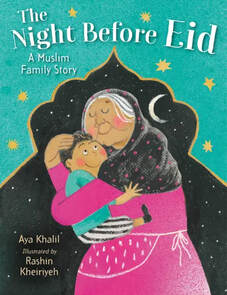 In the fall of 2021, I learned that my debut picture book, The Arabic Quilt was on a banned book list at Central York District. It was taken off of shelves and children were not allowed to read them. The book that took years to write and find a publisher. The book I was receiving dozens of emails and messages about how kids’ eyes lit up when they saw an Arab or Muslim character on the cover. The book that I had stayed hours at the library to research. The book I devoted a lot of time to learning about the publishing industry for. The book I met up with critique partners for, and stayed up late to revise and edit, long after I had put my young kids to bed. Some people say I’m lucky that the book is now a banned book because of the attention it would get. But I disagree; there are only a few picture books by Arab Muslim American authors. For a period of time, students weren’t able to check out The Arabic Quilt from their libraries, and this picture book could have been the only book with a positive portrayal of an Arab Muslim. The censorship and ban were upsetting and another hurdle as an author of color. It’s a privilege not to have to worry about whether or not your book will be banned because of who the characters of the book are and the theme of the book. The book ban reminded me why I was so adamant, and so persistent about publishing The Arabic Quilt in the first place. Navigating the world as a Muslim and an Arab is challenging in its own right but these challenges are multiplied further in the world of publishing, something I believe many BIPOC authors can relate to. The microaggressions I, as well as many other BIPOCs face on a daily basis and within the publishing industry itself, is partly because we never got to tell our side of the story or our stories weren’t heard or we were rarely ever the heroes of stories. In fact, we were always the villains, or the victims. Growing up in the U.S. I never saw characters who looked like me, a Muslim, Arab American in TV, movies, or in books with positive portrayal. I am 35 years old and the first time I saw a character with my name, Aya, in mainstream media in the U.S. was when I was 34. It was a powerful moment and I almost couldn’t believe it. I didn’t want BIPOC children to have to wait as long as I did to feel seen and to feel proud of the way they were being portrayed. In 2005 after I graduated high school I told my parents I would not go into medicine, law, or engineering like most of my friends around me from my Islamic High School. I would go on to study communication and English literature and use the power of my words to control the narrative. To tell our stories. To tell my story. Years passed with this dream in mind. I worked as a freelance journalist for a decade and earned my master’s degree in Education but it was only when I had my own children and became a teacher that I started turning this dream of telling our stories into a reality I was surprised at how the bookshelves in the classrooms I was working in didn’t reflect the demographics of the students I was teaching. Most of the books had white children on the cover, but the majority of the students were BIPOC. I came across a few self-published picture books by Muslim authors that had Muslim characters. There were only a few out there but it was still hard to find them at libraries or to come across them at bookstores. A few picture books were getting published by traditional publishers around the same time and it was mind blowing to me that Muslim kids could casually find these books at bookstores and the library. Books with characters that looked like them: unapologetic Muslims living their everyday life and being the heroes of their stories. After seeing a call out to Muslim authors from a literary agent around the same time former President Trump announced a Muslim ban in 2017, I decided it was time for me to tell my stories through children’s books. I went through the hurdle of querying literary agents. After struggling for some time with rejections I reached out to other authors who gave me feedback on my manuscript and I joined a local picture book critique group and took book-writing classes. When I was offered representation by a wonderful literary agent, Brent Taylor, who somehow believed in my picture book manuscript, I thought all the hard work was finally over. Boy was I wrong. Months went on and we were getting rejection after rejection. Some rejections were more courteous and even came with feedback. Other rejections, however, made it clear that some publishers weren’t willing to risk publishing a story about a Muslim, immigrant child, and by an unknown debut author no less. I told myself it was okay to set this to the side and forget about it. Maybe I should just stick to non-fiction; to journalism and continue to blog and pitch pieces to magazines and newspapers. Then one hot summer day in 2018 when I was walking my kids to Arabic school, I opened my email and was shocked to see that a small independent publisher was interested in The Arabic Quilt. I was ecstatic, as they had published one of my favorite picture books, Laila’s Lunchbox a few years earlier and it was what inspired me to write a picture book and traditionally publish it. I couldn’t believe it at first but I will never forget how at that moment, I thought, I think this is it. My words are going to be out there for kids to read. In 2020, in February, right before the pandemic hit the U.S., my debut was published, and it was beautifully illustrated by Anait Semirdhzyan. My publisher emailed me a few days later saying it was flying off the shelves and it was getting sold out quickly in a lot of places. This was surprising to me, as I wondered how many people would be interested in reading a picture book about an immigrant Muslim girl named Kanzi. Moreover, I was still thinking (and upset to be honest) about the mixed review from a popular trade review magazine that said the dialogue in the book was “stilted” and the message was “outdated.” I felt this was unfair, as the book was based on my real experiences as an immigrant and Egyptian child, but I was also reminded that these reviews were subjective. After a few more weeks, we learned our book earned a starred review from the School Library Journal and later had won numerous prestigious awards. The best part though, was getting messages from Muslim and/or Arab parents saying their children’s eyes lit up when they found the book at the library or bookstore or when their teachers read the book to them in their classroom. They felt seen. How I wished I had this book, and other books with positive Muslim portrayal growing up. It is their positive feedback that encouraged me to continue writing and as of 2022, I have another book that was published this fall, Our World: Egypt, a board book filled with love and joy between an Egyptian dad and his daughter, something rarely portrayed in the media. In 2023, I have three books coming out: The Night Before Eid, illustrated by Rashin Kheiriyeh out on March 7th and The Great Banned Books Bake Sale, illustrated by Anait, out on August 1st, which is loosely based on the true story of when The Arabic Quilt was banned. Fortunately, the ban against my book was also lifted shortly after thanks to student protests at the district and an outcry from around the country. Around the same time, I also learned that two districts across the country had purchased tens of thousands of copies of The Arabic Quilt for their curriculum. Despite these achievements, there’s still work to be done. Arab authored books are still underrepresented. In 2019, 1.2 percent of books had a Muslim diversity subject, although the accuracy and quality weren’t evaluated. I am often put on book lists during Asian American Heritage Month or not put on book lists for Arab American Heritage Month while Asian authors are put on there. In 2023, I hope more people support books by Arab authors. I hope editors buy more of these books and agents take on more Arab. However, despite the regular challenges of any author who is querying agents and going on submission to editors, BIPOC authors have an additional struggle during this arduous process. When editors or agents tell us they already have “a Muslim author” on their list or “an Arab author” client, but their lists are filled with white authors and animal characters. Moreover, another heartbreaking type of rejection BIPOC creatives get is being told that publishers already have enough of a certain type of story on their list and it’s already oversaturated, although we never had the chance to tell that story with our voice. It’s also worth mentioning that going into this industry, you will be doing a lot of educating. Educating illustrators, editors, copyeditors about things that must stay or be removed in the story or illustrations. It can get exhausting at times, but it’s important information for our stories to stay authentic and true as possible and educating is a key part in that. At the Muslim Storytellers Fellow Highlights Retreat, I found myself sitting alongside talented Muslim authors, writers and illustrators. We shared our struggles about navigating the publishing industry, but reminded one another about the importance of storytelling. Our readers keep us going. Our children keep us going. Our teachers and librarians keep us going. Our families and friends keep us going. Rejections are part of this journey, and we will continue to face microaggressions and struggles along the way, but the love and passion we have for publishing our stories keeps us motivated. Being a marginalized author in this industry is no easy feat, but it is worth it when you know you’re making a difference in children’s lives and normalize unapologetic Muslim stories. It’s time we continue to reclaim our narrative and continue to be the heroes of our stories because our stories have been here for a long time and they’re here to stay. I hope readers will continue to see themselves in my books and I hope they love The Night Before Eid, which can be purchased here on March 7th. Aya Khalil, M.Ed, is the award-winning author of The Arabic Quilt: An Immigrant Story, which is an NCTE’s Charlotte Huck Award Recommended Book and the winner of the Arab American Book Award, among other honors. She's also the author of Our World: Egypt and The Night Before Eid. Aya holds a master’s degree in education and her articles have been in The Huffington Post and We Need Diverse Books, among other publications. She immigrated from Egypt to the United States when she was one and lives with her husband and children in Northwest Ohio. Her website is www.ayakhalil.com  A month before Ramadan, a buzz begins in the online Muslim American parenting forums. Parents are divided into two categories, parents preparing to share Ramadan with their kids’ classrooms/libraries and parents who are facing resistance. I recently received an email from a parent in the latter group. "Hello, This is X. I am a mom of three girls. I really got so inspired by your webpage. We live in Texas, and recently I contacted a local library in my neighborhood about decorating a corner of the library for Ramadan. At first, the lady was very positive, but afterward, I was informed that they could not let me do that because it is a religious activity…Please let me know how I can approach this issue. I just want my kids to feel proud of their identity…" It is difficult to read messages like these. Thankfully, there are also educators and librarians that see the bigger picture. Teaching kids about Islamic holidays prepares them for our increasingly globalized world and nurtures empathy. And when Muslim children share their identity with their community, it positively impacts their self-esteem. This mutual understanding benefits all. There are almost two billion Muslims worldwide, and it is the second-largest religion. Educating children about Islamic holidays prepares them to be global citizens. In sixth grade, I went to a predominantly White public school in a two-stoplight town in Pennsylvania. Diversity was not a part of the curriculum and I would often find myself defending Islam and other minority groups. Ten years later, I learned a classmate from this small town was working in Afghanistan. I couldn’t help but wonder if understanding Islam earlier in life would have better prepared him. Educating children about Islamic holidays nurtures empathy. On Sesame Street, Mark Ruffalo tried to explain empathy to Murray: Mark: “Empathy is when you’re able to understand and care about how someone else is feeling.” Murray: “Oh right, that’s what empathy is! [Pause] I don’t get it.” This interaction is so honest! Empathy is not something one “gets.” It is felt. Adults teach children empathy by role-modeling and caring about experiences that are not their own. And inclusivity is an important tool for building empathy. In western culture, Valentine’s Day, St. Patrick’s Day, and Easter mark the beginning of the year. Most western holidays are rooted in the Christian tradition; as a culture, we are not great at bringing visibility to minority communities. Sharing traditions beyond the Gregorian calendar helps children understand the experiences of those unlike themselves. Educating children about their Muslim peers positively impacts the self-esteem of our Muslim children. Research shows that a lack of representation can lead to negative psychological outcomes for those with identities that are underrepresented or negatively portrayed (Tukachinsky, Mastro, & Yarchi, 2017). Incorporating the traditions of minority groups is critical to having them feel seen, heard, and respected. And only through this mutual understanding can diverse communities genuinely understand each other and build friendships based on positive relationships of trust. I share an example of this (from the earlier referenced Muslim parenting forum), “This Ramadan, my daughter looked at the holiday section at her local library and said, “Mommy, how come there aren’t any books about Ramadan here?” Sure enough, there were a few—but quite meager in comparison to the Christian, Jewish, Halloween, and other holidays that filled several sections of bookshelves. This year we decided to do something about it and donate a Ramadan book to this library…Her teacher (Mrs. Karen) looked at us with tears in her eyes and embraced us. “I love you both, and you are important members of our community. Muslim children and all families should feel comfortable and welcome when they come here.” She even asked if I would send her a list of suggested Ramadan books to add to their collection. I was not expecting to get emotional, but her positivity and genuine compassion touched my heart. I realized the impact of what a small and humble act of kindness can do in addressing a simple need for our community’s growth…” Photo credit: Anisa Diab Pictured: Mrs. Karen and Jennah As educators prepare their programming this month, I hope they role-model empathy, prepare our children for a global community, and most importantly, create space for Muslim children to feel seen and welcome during Ramadan. Teachers and librarians who feel it (not just get it) are watering the seeds of unity.
KidLit in Color author Valerie Bolling is excited to reveal the cover for BING, BOP, BAM: TIME TO JAM! (illustrated by Sabrena Khadija and published by Abrams Appleseed). This picture book, which is a companion for 2022’s RIDE, ROLL, RUN: TIME FOR FUN!, will be released on August 8, 2023.
What does the cover say? First of all, shout-out to Sabrena Khadija for the amazing illustrations! I continue to love Sab’s unique style of making magic with geometric shapes. This cover “jams” with music and joy, and it emanates the characters’ energy and excitement. It says, “Come join the party!” Why should folks read this book? Do you love music? Do you enjoy a party? Do you like spending time with friends? If any or all of these are your jam, then BING, BOP, BAM is for you! This rhyming book celebrates a neighborhood’s musical block party that features an intergenerational community, instruments and food from around the world, and, of course, fun. What’s Next? On May 2, 2023 the first book, THE GRAY DAY, in my early reader series, RAINBOW DAYS (illustrated by Kai Robinson and published by Scholastic Acorn), will make its appearance, and the second book in the series, THE GOLD BOWL, arrives in September. TOGETHER WE SWIM (illustrated by Kaylani Juanita and published by Chronicle) will be released on August 15, 2023 – a week after BING, BOP, BAM. Looking ahead to 2024, I’ll welcome the third RAINBOW DAYS book, THE ORANGE WALL, as well as I SEE COLOR, a co-authored book with Kailei Pew (illustrated by Laylie Frazier and published by Harper Collins). I’m excited to get these books into schools, libraries, bookstores, and, ultimately, into the hands of young readers. |
Archives
July 2024
Categories
All
|
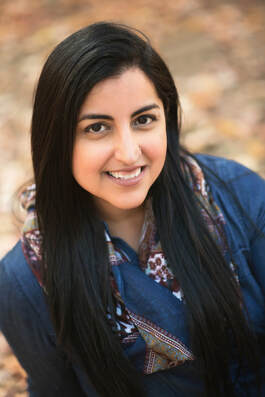
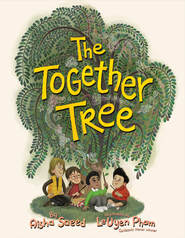
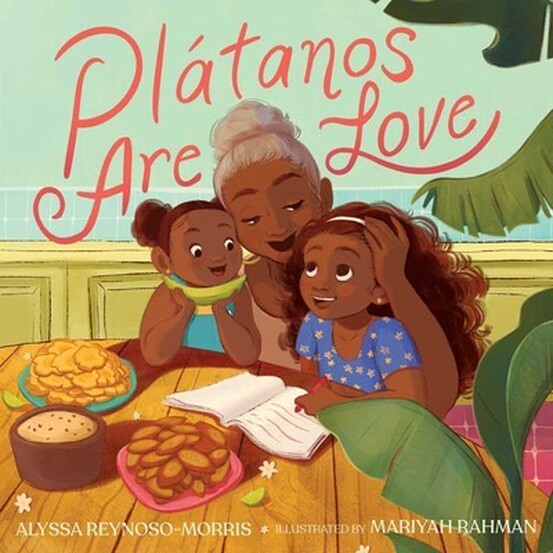
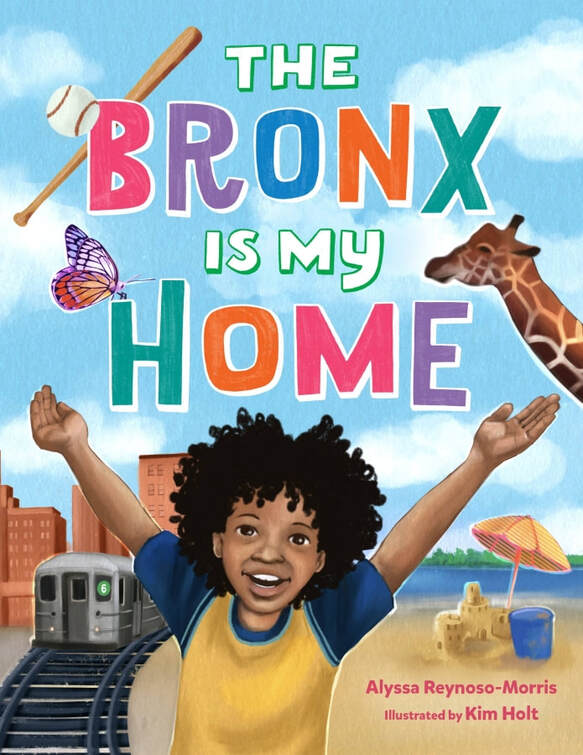


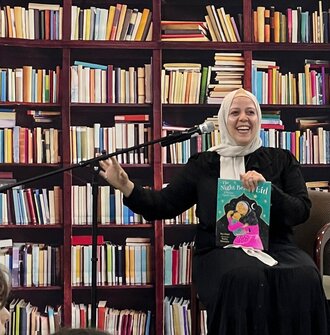
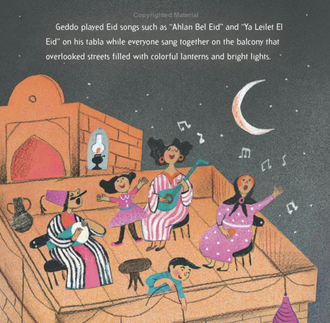
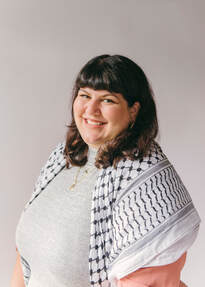
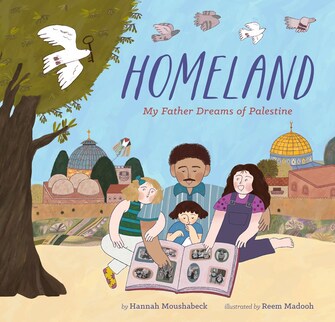
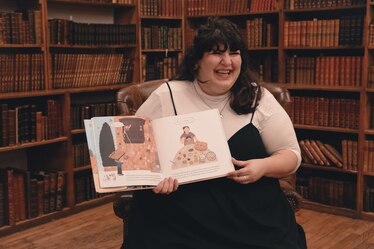
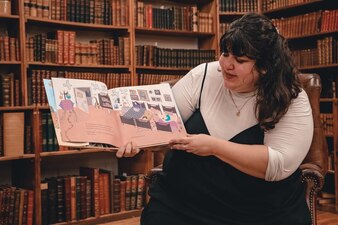
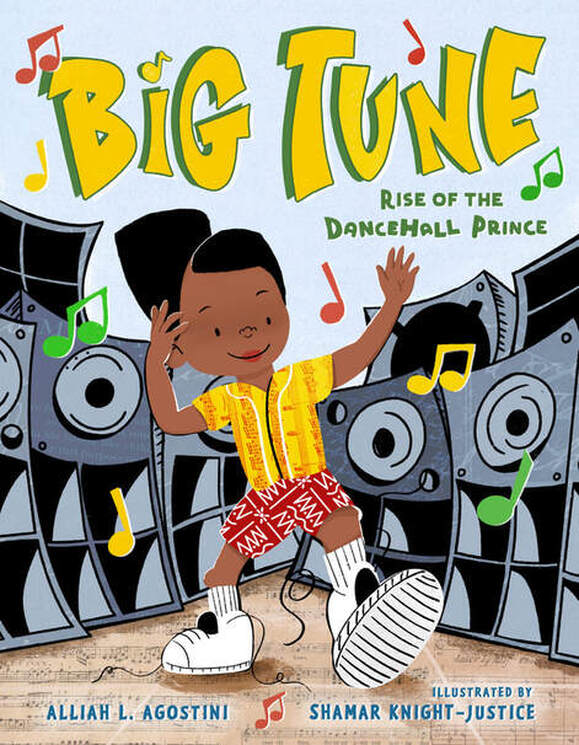
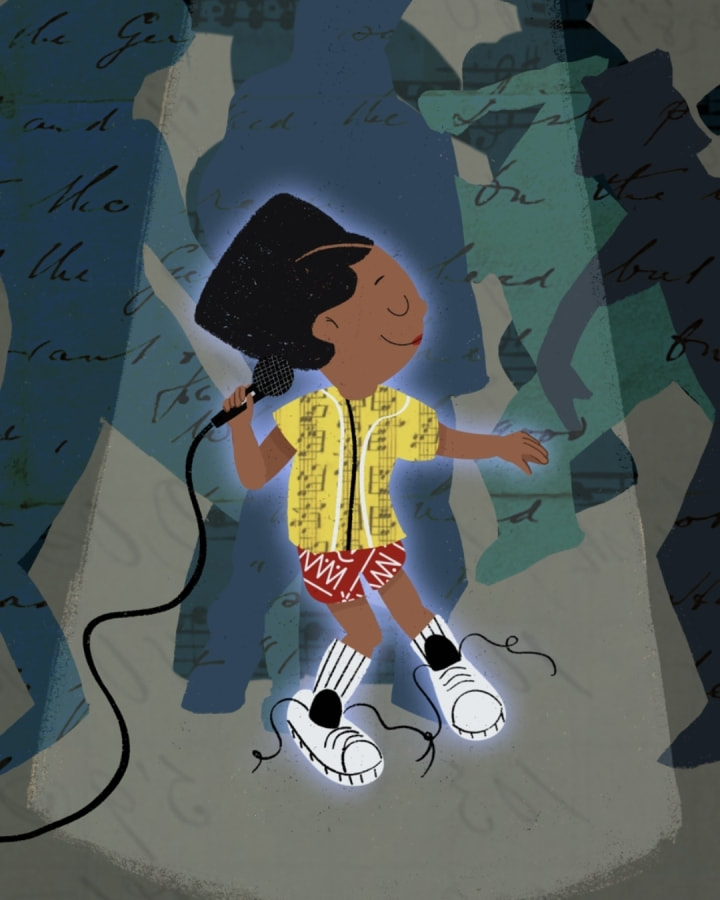
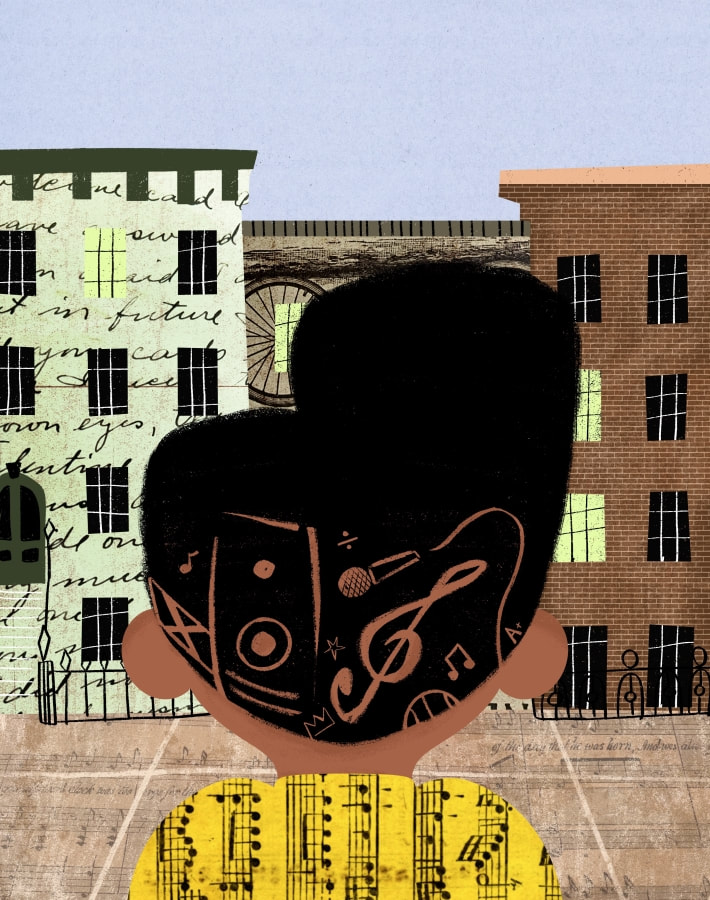
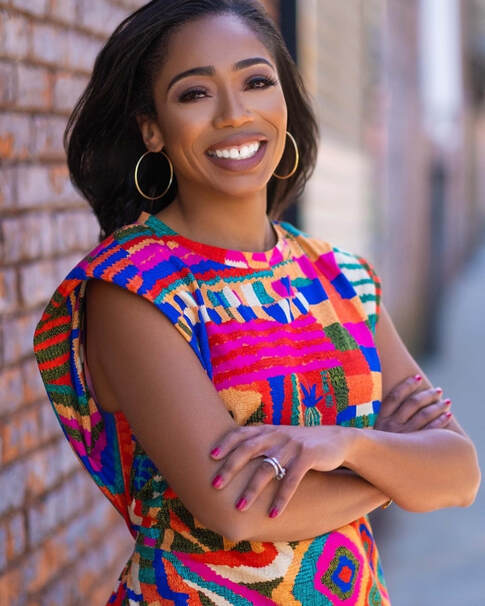
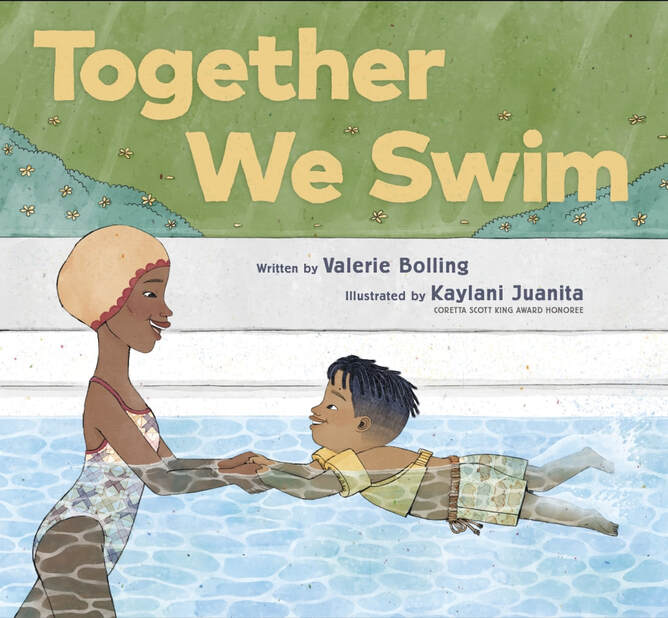
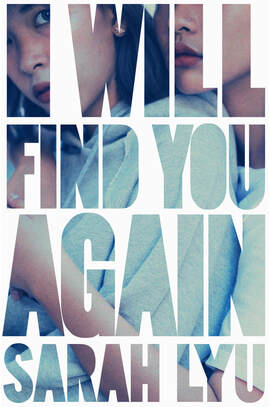
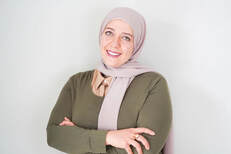
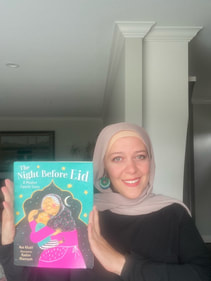
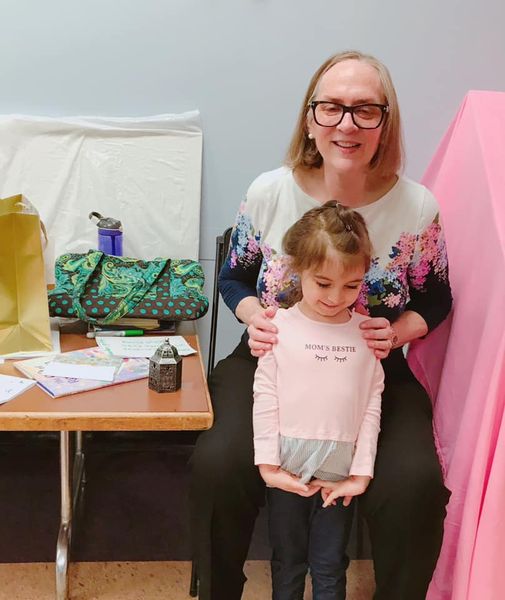
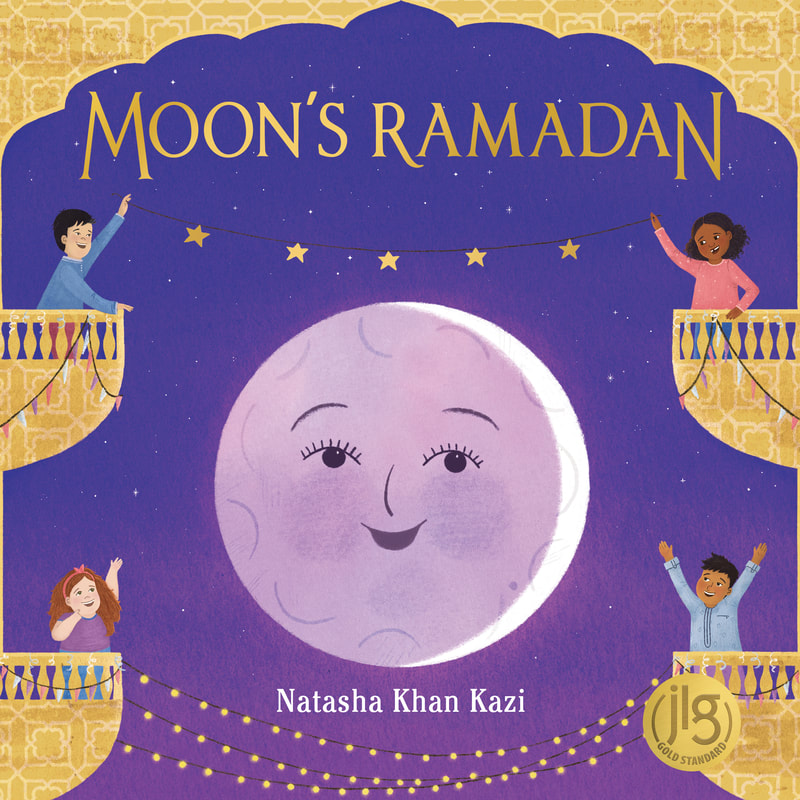
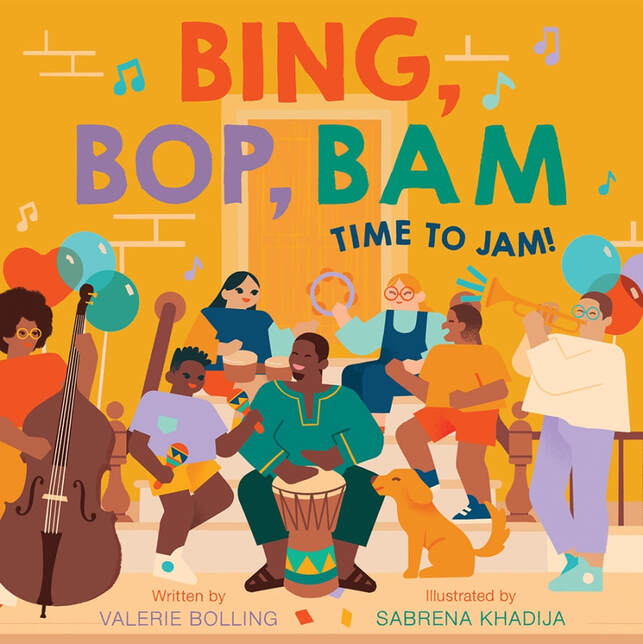
 RSS Feed
RSS Feed



